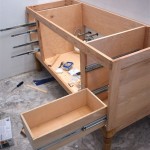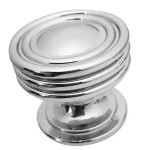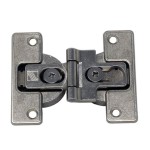Adding A Shelf In A Cabinet
Adding a shelf to a cabinet is a simple yet impactful home improvement project that can significantly enhance storage capacity and organization. Whether you're seeking to better utilize space in your kitchen, bathroom, or any other room, installing an additional shelf can provide a practical solution to clutter. This guide will outline the necessary steps involved in adding a shelf to a cabinet, equipping you with the knowledge to tackle this project confidently.
1. Gathering Supplies and Planning
Before embarking on the installation process, it's crucial to gather the necessary materials and plan the shelf's placement. The following items will be required for most installations:
- Shelf Material: Wood, metal, or plastic are common options, each offering varying levels of durability and aesthetic appeal. Consider factors such as the weight of items to be stored and the overall cabinet design.
- Shelf Supports: Depending on the shelf’s length and weight capacity, appropriate supports are needed. These can include metal brackets, shelf pins, or wooden cleats.
- Screws or Nails: Choose fasteners that are suitable for the cabinet's material and the shelf supports.
- Measuring Tape and Level: These tools are essential for ensuring the shelf is installed straight and at the desired height.
- Pencil: Used for marking the shelf positions on the cabinet walls.
- Drill with Driver Bits: A drill is helpful for pre-drilling pilot holes and securing screws.
Once the materials are gathered, carefully consider the following:
- Shelf Placement: Determine the optimal location and height for the new shelf. Consider the existing contents of the cabinet and the items you intend to store.
- Shelf Length: Measure the available space within the cabinet to determine the appropriate length for the shelf. Ensure it can comfortably fit without obstructing any existing features or hardware.
- Shelf Weight Capacity: Selecting the appropriate shelf material and supports is crucial for ensuring the shelf can safely hold the intended weight. Consult product specifications or seek professional advice if unsure.
2. Preparing the Cabinet
Before installing the shelf, prepare the cabinet for the installation. Remove any existing contents and evaluate the cabinet's structure:
- Clean the Interior: Wipe down the inside of the cabinet to remove dust or debris that might interfere with the installation process.
- Inspect for Damage: Check if there are any cracks or weaknesses in the cabinet's walls or existing shelves that may hinder the shelf's stability. If necessary, address these issues before proceeding.
- Assess Existing Hardware: If the cabinet has existing shelf supports, determine if they can accommodate the new shelf or if new supports are necessary.
3. Installing the Shelf Supports
The method of installing shelf supports depends on the chosen type of support and the cabinet's structure. Here are some common approaches:
- Metal Brackets: Measure the desired shelf height and mark the locations for the brackets on the cabinet walls. Use a level to ensure the marks are straight. Pre-drill holes if needed, and secure the brackets to the cabinet using screws or nails.
- Shelf Pins: If the cabinet features pre-drilled holes for shelf pins, choose the appropriate height and insert the pins into the corresponding holes. Shelf pins are often adjustable, allowing you to customize the shelf height.
- Wooden Cleats: Measure the width of the cabinet and cut a piece of wood to fit the length of the shelf. Secure the cleat to the back wall of the cabinet using screws or nails. Ensure the cleat is positioned at the desired height for the shelf.
4. Placing and Securing the Shelf
Once the supports are installed, carefully position the shelf onto them. If using brackets, ensure the shelf rests securely on the bracket's supports. For shelf pins, slide the shelf onto the pins, making sure it sits level and flush with the sides of the cabinet.
For cleat installation, place the shelf atop the cleat, ensuring it sits flush with the sides of the cabinet. If necessary, use screws or nails to secure the shelf to the cleat. This step adds stability and prevents the shelf from moving.
After securing the shelf, step back and visually inspect the installation. Ensure the shelf is level, securely attached, and does not wobble or sag under its own weight.

How To Add Shelves Existing Kitchen Cabinets And Organize Your New

Small Kitchen Ideas Add An Extra Shelf In Your Upper Cabinets Engineer Space

Adding Shelves In Bathroom Cabinets Gray House Studio

Get Extra Storage In The Kitchen Cabinets Green With Decor

Diy Adding A Shelf To Your Pantry Easy Shelving Install Youtube

Adding Shelves In Bathroom Cabinets Gray House Studio

Small Kitchen Ideas Add An Extra Shelf In Your Upper Cabinets Engineer Space

Get Extra Storage In The Kitchen Cabinets Green With Decor

Adding Shelves In Bathroom Cabinets Gray House Studio

Diy Built In Bathroom Shelves And Cabinet Angela Marie Made








